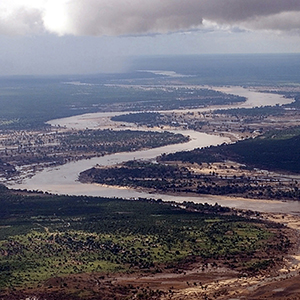Hydrological characteristics of extreme floods in the Klaserie River, a headwater stream in southern Africa

All claims expressed in this article are solely those of the authors and do not necessarily represent those of their affiliated organizations, or those of the publisher, the editors and the reviewers. Any product that may be evaluated in this article or claim that may be made by its manufacturer is not guaranteed or endorsed by the publisher.
Authors
Climate change models for southern Africa predict less frequent, but more intense, rainfall events, and an increased frequency of tropical cyclones. With their steep topography and small catchments, headwater streams generate large floods following intense rainfall events. Large flooding events in headwater streams are under studied in southern Africa. In this paper, we explore flooding in the upper Klaserie River, Limpopo River System, South Africa to determine the flow distribution and flood frequency for the catchment. In addition, we determine the return level for a large, economically damaging, flood generated following the landfall of a sub-tropical depression in January 2012 and, attempt to identify rainfall patterns that resulted in similar floods. An annual hydrological cycle with summer maxima and winter minima for both rainfall and flow was identified. The flood frequency analysis demonstrated that the January 2012 flood had an estimated return level of 225 years. This flood had a peak flowrate exceeding 1200 m3s-1 in a system with an average daily flowrate of 1 m3s-1. Regression tree analysis showed that a two-day rainfall in excess of 240 was a predictor for four of the five largest floods. A two-day rainfall in excess of 400 mm distinguished the January 2012 flood from other floods. Non-stationarity analyses for the flow and rainfall data and a SWAT hydrological model are recommend for the upper Klaserie River to evaluate climate and land cover changes, and their relationship to the magnitude of the 2012 flood. Our study demonstrates that South African river monitoring data can be used to detect and characterize major floods, despite deficiencies in these data. Continuation of these monitoring programs is vital for river health monitoring and the detection of trends in floods resulting from human activities and climate change.
Edited by
Diego Fontaneto, National Research Council, Water Research Institute (CNR-IRSA), Verbania Pallanza, ItalySupporting Agencies
South African Environmental Observation Network (SAEON)How to Cite

This work is licensed under a Creative Commons Attribution-NonCommercial 4.0 International License.






